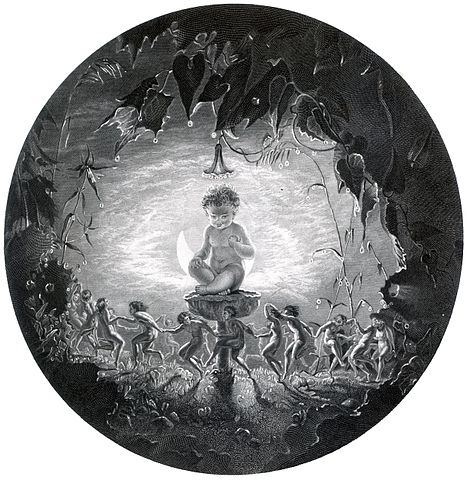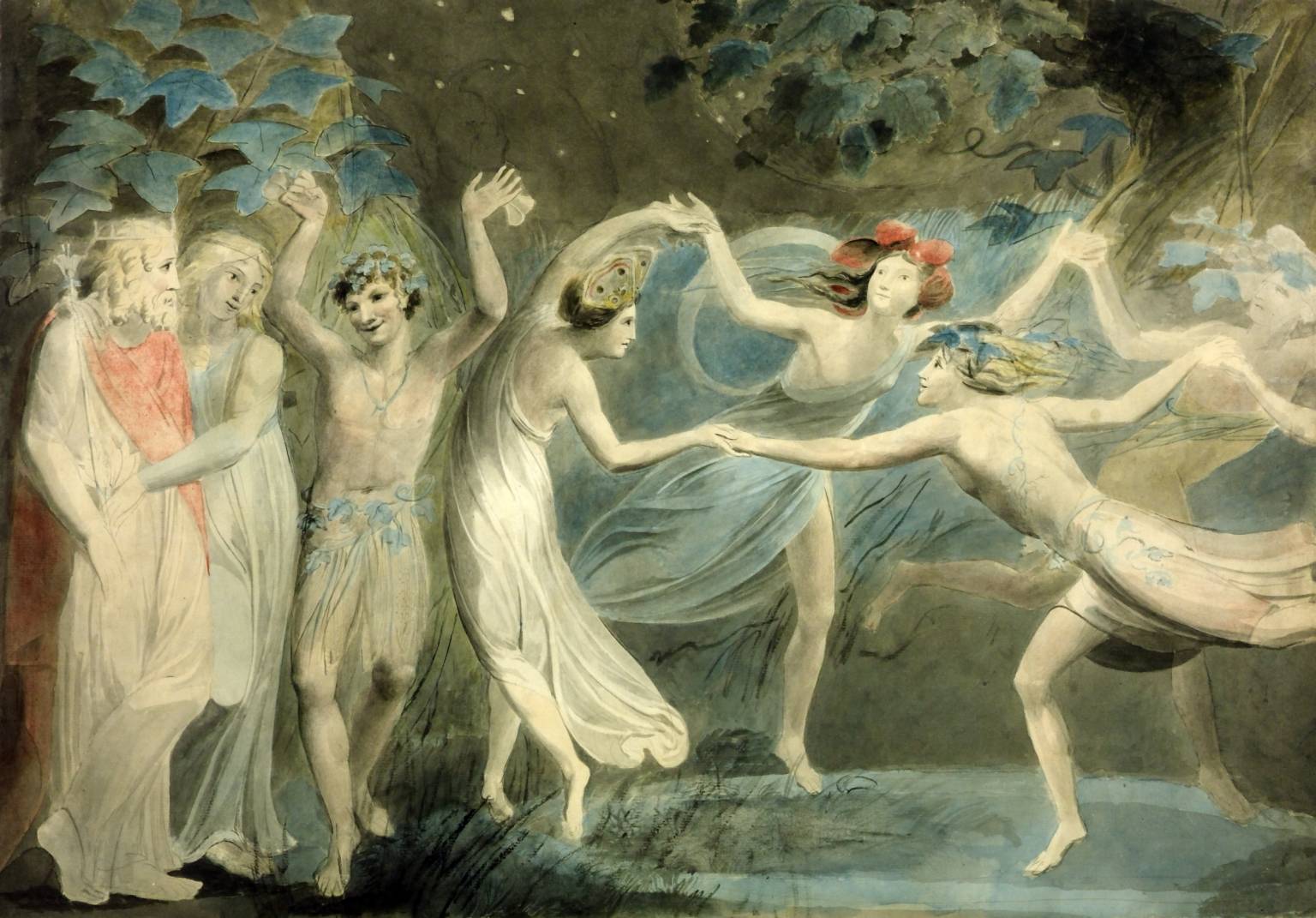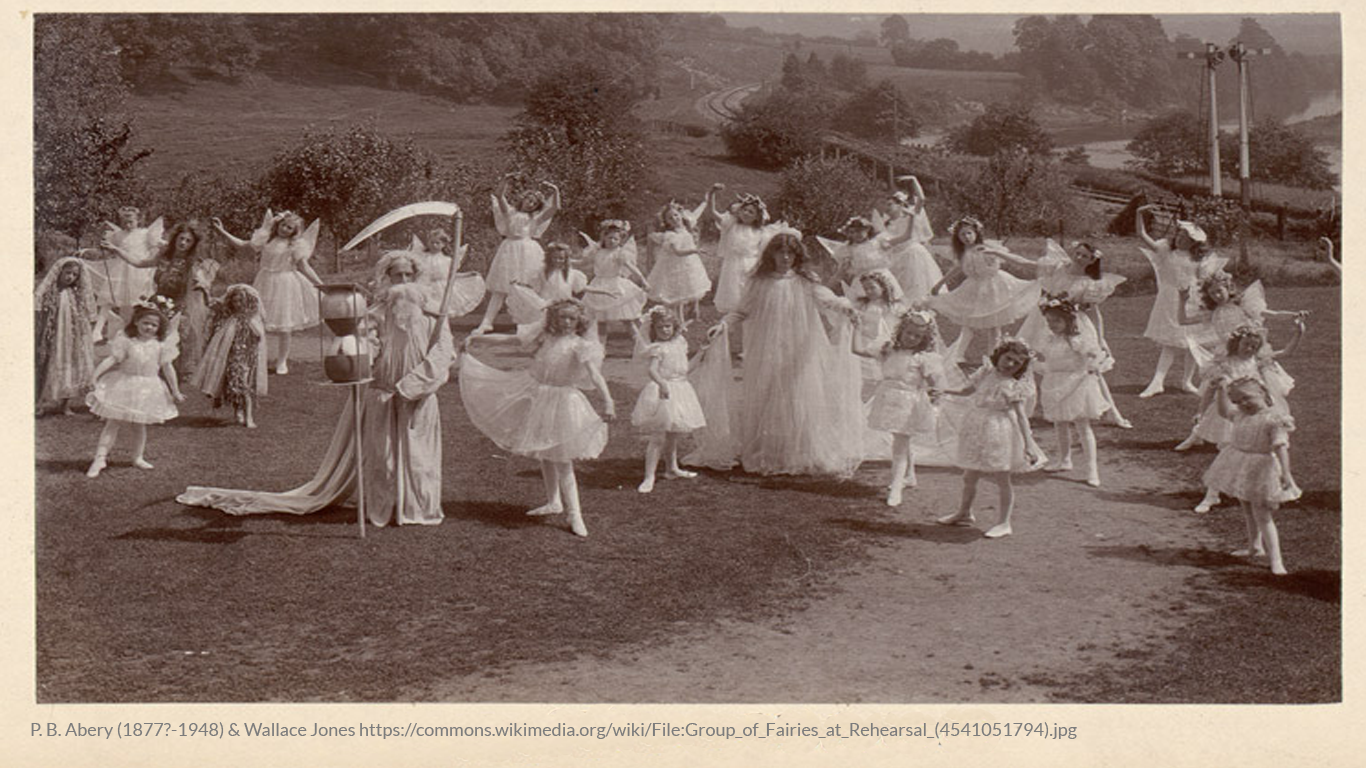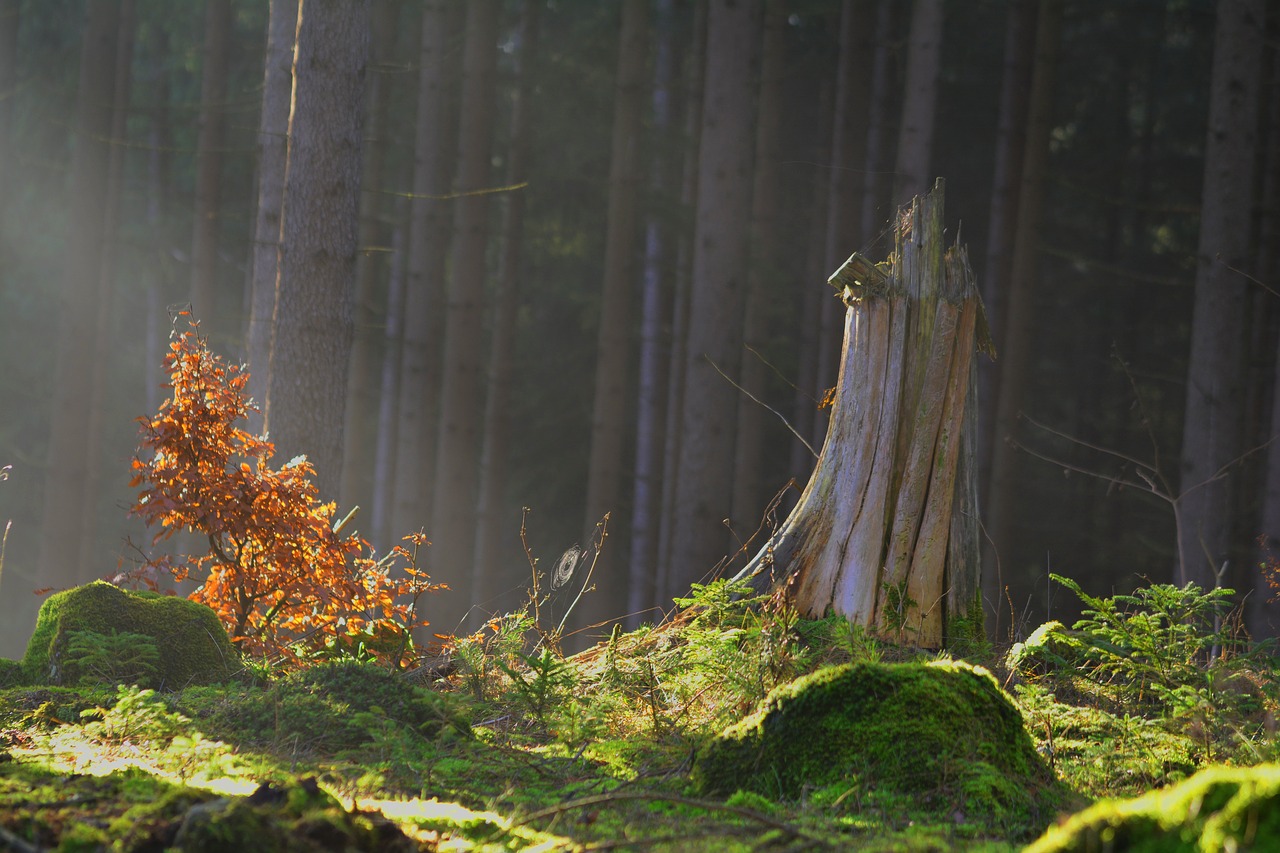Last autumn I felt torn in two. I was editing, by day, with Ceri Houlbrook, Magical Folk: British and Irish Fairies, 500 AD to the Present, a book on folklore. Magical Folk (Gibson Square 2017) has sixteen chapters on the fairies of different parts of Britain and Ireland, and emigrant fairies in North America, put together by some of our best fairy historians and folklorists. Then, simultaneously, by night, I was preparing The Fairy Census: 2014-2017 a collection of modern fairy sightings. These had been collected through an internet questionnaire via radio, magazines, newspapers and, crucially, social media. Five hundred men, women and children had sent their experiences in and I was desperately trying to collate the data so that the two books could be launched simultaneously. Magical Folk at Amazon and ‘all reputable booksellers’ and The Fairy Census free online.
The problem was not that I had to slog away at two different books: I could have just about dealt with that. The problem was that the two books were about the same thing – fairies – and yet so very, very different. In Magical Folk our authors took fragments of folklore and fairy beliefs from a given region, seasoned with the most popular local fairy stories. In The Fairy Census respondents talked, instead, about the weirdest, most intimate moments that they had lived: they often confessed that they had told no one or practically no one about what had happened to them. I turned one way, it was a jolly morris dance with accordions and cymbals: I turned the other way it was a painfully energetic salsa where everyone was nude. It was an uneasy experience. I’m glad it is over. It goes without saying that the contrast between the two books made me think a lot about how told folklore and lived folklore differ.
What I want to do here, by way of therapy, is give a taste of how told folklore and lived folklore bleed into each other. I want, in fact, to give examples where those weird, intimate experiences of the Fairy Census contain fragments of ‘unknowing tradition’. What I mean by ‘unknowing tradition’ is that the individuals in question had a fairy experience that echoes experiences in traditional fairylore, but where they had no apparent knowledge of this aspect of fairylore. Usually there is knowledge. Take one encounter between humanity and the fairies recorded in the Census. A man cannot wind up some wires while shooting a film in a wood (§221): the leads keep knotting. He takes off his jacket and turns it inside out thus confounding the mischievous fairies. The wires wind, now, perfectly. It is fascinating that a middle-aged man in Arkansas in the early 2000s would think to do this: but he clearly knew about the tradition of turning pockets or coats against fairy wiles. I was looking, however, for something rather rarer: namely, instances where respondents were not aware of the folklore that they were experiencing. There follow three examples from many possible instances: the White Sabbath; the Rolling Pooka; and the Water Bogeys. If anyone reading the Fairy Census is struck by others I would love to hear more.

White Sabbath
In the seventeenth and eighteenth century, in many parts of Europe, witches were ‘encouraged’ to make confessions about their midnight meetings at the Black Sabbath: readers will know that, at the Black Sabbath, witches would fornicate with the devil and eat babies with their fellow witches. There has long been the suspicion that the Black Sabbath was the local church’s take on a folk tradition about, what has been called the ‘White Sabbath’. This was, instead, an occasion where certain privileged men and women would fly at night to feast with the fairies. Here they would effectively seal a pact, whereby the humans would serve the fairies and the fairies would give the humans power in return. I was particularly impressed by two accounts that recall this kind of a tradition in a modern guise.
- §338) US (New York State). ‘Not sure when it began as a child but I know it ended on my tenth birthday because I recall the disappointment and correlate that year. They came to me in my sleep, very often and the purpose was always the same. To take me to fly above the rooftops and tree tops throughout my neighborhood as a very exciting treat. I thought for years it was just an odd recurring dream but the details of the things I saw from that bird’s eye view would be impossible to have been a dream. In latter years I was able to understand and recall more emotional details. I don’t recall the first or last time they came but I know no actual words were spoken. They were fluid like beings that were dressed in material that barely covered and was white and thin and always flowing as they too never touched the ground although [they] had legs and feet. I went willingly and trusting as I knew it was under my control where I was to fly and when I was to return. I now feel there was an exchange that occurred. I feel they (as many as five or six) absorbed the excitement from me. Never draining although I slept deeper and always briefly awoke at the point of being back in my bed. They oddly had no identifiable age but male/female was apparent and not concealed.’ ‘Clothing always appeared white but sheer not fitting more like dropped and flowing always in movement. Their faces some old but bodies looked young some young faced with near adult feature.’ ‘They came to my house but never inside, rather to the window where they would wait for me. They had a way to let me know they were there but it still alludes me.’
- §376) US (Texas). ‘When I was six years old I was playing in the empty lot next to my house and suddenly, I was in a forest. The fairies were tall and they fed me a drink and cakes that were very sweet and seemed to be made of light. It was dark, but it wasn’t because it seemed like light emanated from the trees. After a couple of hours a woman told me I had to go back. I didn’t want to go back and complained. She told me I had to because I had a purpose. Suddenly, I woke up on the floor of my living room. I don’t remember getting there or leaving the open lot where I was running around and playing. I felt like I had lost time.’ ‘Some of them looked human but were tall and thin. There seemed to be a light glowing from their skin. There were others that had hooves and played musical instruments while everyone else danced.’ ‘The music was joyful and reminded me of an Irish jig, but even better. They played on drums, pipes, flutes and guitars.’ ‘I remember that they referred to themselves as Fae.’
Children are massively over-represented in the Fairy Census: the young are, as might be expected, far more likely to see fairies than adults. However, in most accounts children do just that, they see or at most have very light interaction with fairy neighbours. In these two cases the two girls, one perhaps six to ten and one six, have a much stronger form of interaction. They are effectively socializing with the local fairy population and there are hints of an exchange: food/energy. Most of our records of the White Sabbath come through the filter of legal documents recording the prosecution of witches. I wonder if here we don’t have a pristine first-hand version: a kind of shamanic awakening; the child from Texas has had ‘regular’ supernatural experiences as an adult. Both involve some kind of dream (the White and the Black Sabbath took place during sleep with the dreamer travelling in the spirit): note the young Texan waking up passed out on the floor of her living room.

Rolling Pooka
Here is another account that recalls folklore.
- §148) Ireland (Co. Dublin). ‘While traveling at night, on a road that ran up some mountains, we saw a shapeless white form that appeared to be a white shopping bag blowing around in the wind moving quickly up the mountainside. It was moving against the wind, however. Uphill. We had pulled off the road, at a lay-by, to look at the view of the city lights down below, when we noticed the shape jumping from tree to tree towards us. It was about two or three square feet in area, and a matte bluish white color. Like a large pillow case or, like I said earlier, a shopping bag. No markings or features, not shiny at all, looked more like a strange cloth than a plastic. Both myself (American) and my fiancée (Irish) had a feeling that whatever it was, its intentions were not good. We had a general sense that something unpleasant would happen if it caught up to us, so we jumped back in the car and hightailed it out of there.’ ‘Like an amorphous shape, vaguely rectangular.’ ‘Size changed through the experience.’
Now at first glance this will seem a creepy experience from the edge of a modern western city. We might rationalize it, we might enjoy it, but we will quickly, like the courting couple, move on. However, this is not just any city, it is Dublin and in Ireland there is a nineteenth-century tradition about the Pooka, a mischievous imp who runs around the countryside. Yeats knew, for example, of a Kilkenny pooka that ‘takes the form of a fleece of wool, and at night rolls out into the surrounding fields, making a buzzing noise that so terrifies the cattle that unbroken colts will run to the nearest man and lay their heads upon his shoulder for protection.’ There are a number of these rolling fleeces recorded in the tradition of not just Ireland, but of north-western Europe generally: sometimes they are silent, sometimes they make a noise. Are we dealing with earth lights, shopping bags, diabolical pillow cases, neurological fireworks or ‘something else’? I have not the slightest idea. But seeing a nineteenth-century fairy experience cast in modern terms is curious to say the least. I take it for granted that neither the American boyfriend or his Irish girlfriend knew about this obscure wool-rolling tradition.
Water Bogeys
In many countries there is the idea that water spirits are particularly hungry for human blood. Mermaids, of course, seduce sailors into the sea. But freshwater monsters are, generally speaking, even worse. Take, for example, Jenny Greenteeth who pulled children into canals and pools in the Midlands and North of England, so that she could devour them in her underwater lair. Consider now, instead, this fairy experience from the US perhaps the nastiest fairy from the entire Fairy Census. My suspicion is that the woman in her thirties who had this experience was not conscious of Jenny Greenteeth and other water bogeys. Yet she came face to face with a monster that was quite their equal…
- §343) US (North Carolina). ‘I was on a rock in the river reading while my husband fished on up river. I was across from a park, people walking with kids and dogs. There were two young boys walking on the trail with their dad. They began moving down towards the water, when it [editor’s italics] started coming up the river moving through the water towards them. It was pale-skinned water-logged looking with black hair and sharp serrated teeth showing in a smile. It paid me no attention, but was focused on the boys. They were pointing at it with sticks and could absolutely see it. The dad finally ushered them away from the edge of river seemingly unaware of it being feet from his kids. It watched them move up the trail away with a creepy look on its face and then moved on up river out of sight. Did not look friendly to me.’ ‘I have seen them since childhood different ones and was told that’s what they are. My granny from Ireland says I have the sight like her.’ ‘I was always taught to never talk to them or let them know I see them.’
Terrifying stuff.
Don’t forget to pick up your free copy of The Fairy Census: 2014 – 2017
Simon Young has offered a copy of this incredible survey for FREE! Do download your copy now.
‘Some five hundred fairy experiences follow in these pages, and over 160,000 words
about encounters with the impossible. These were, in the vast majority of cases, taken
from the Fairy Census, an ongoing internet
questionnaire about who sees fairies, when and why: the questionnaire has been
reproduced in an appendix to the present book.’
This volume is being published in association with Simon’s excellent new book with Ceri Houlbrook (ed), Magical Folk: British and Irish Fairies: 500 AD to the Present (Gibson Square 2017), a collection of fairylore essays by
folklorists and historians:
‘British and Irish fairies have been around since 500 AD. Ever since the Cottingley Fairy Hoax (1917-21) they have been in decline, however. In the footsteps of The Lord of the Rings and The Game of Thrones, British fairies are regaining their old lustre. In this book Simon Young and Ceri Houlbrook have gathered the first major history of British & Irish fairies in almost half a century to ensure that Britain’s fairies and fairylore survive into the 21st century. Did you know that many British fairies don’t have wings and can be the size of a leaf or up to 15 foot tall?’





